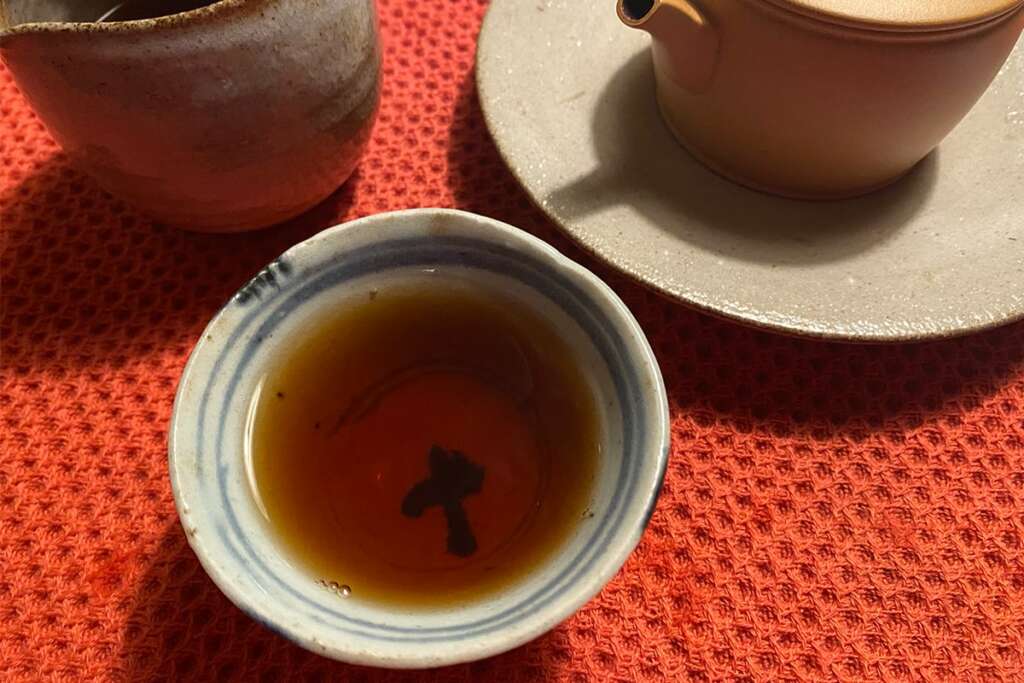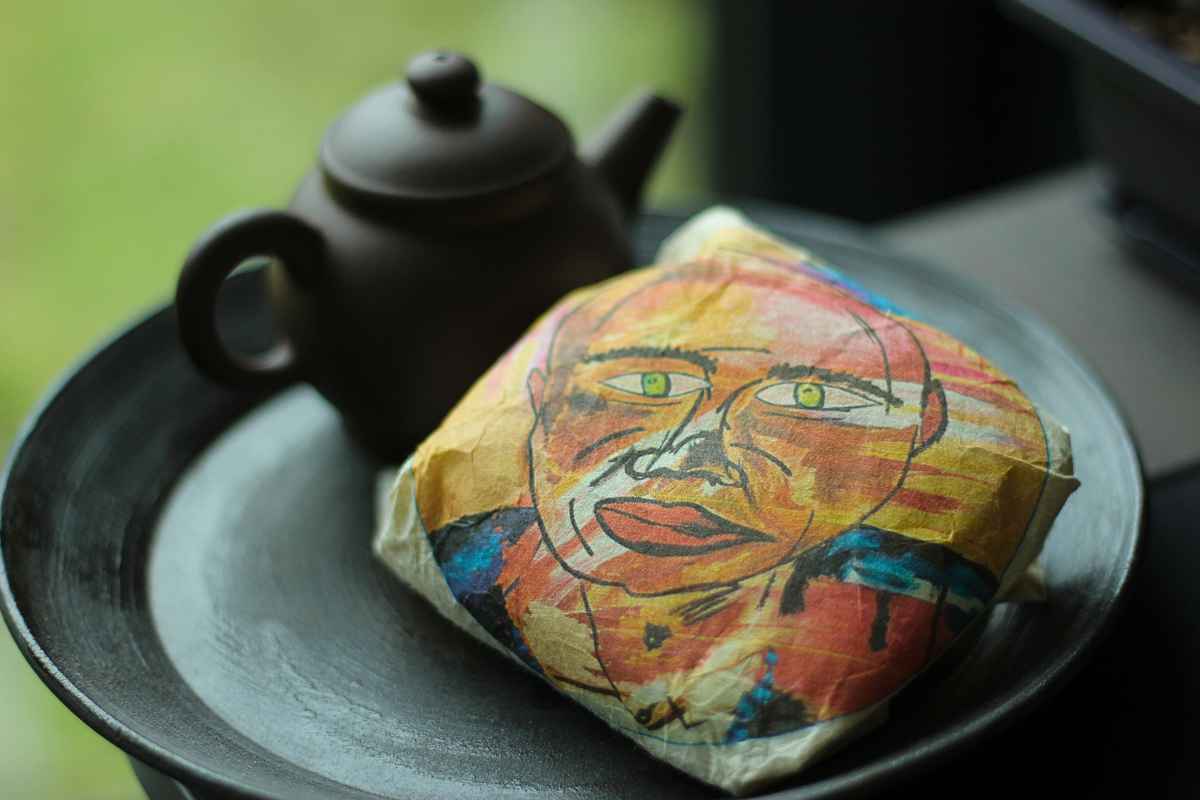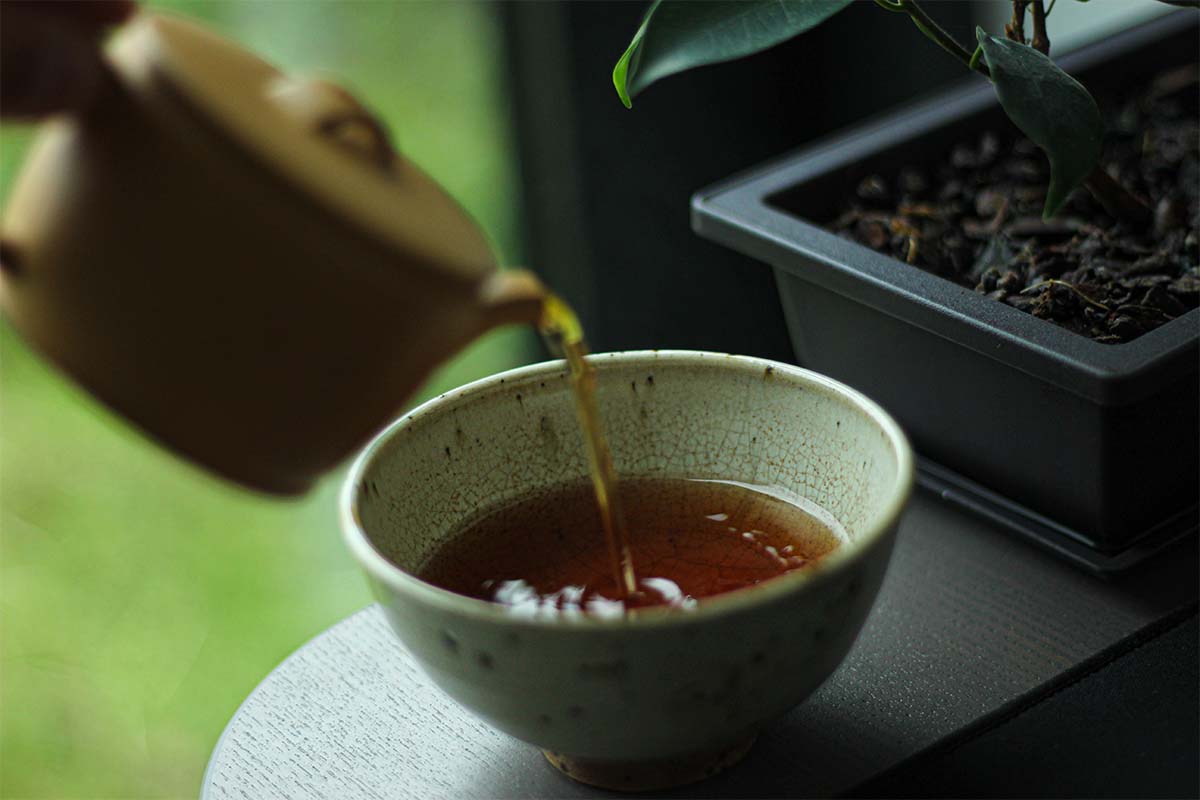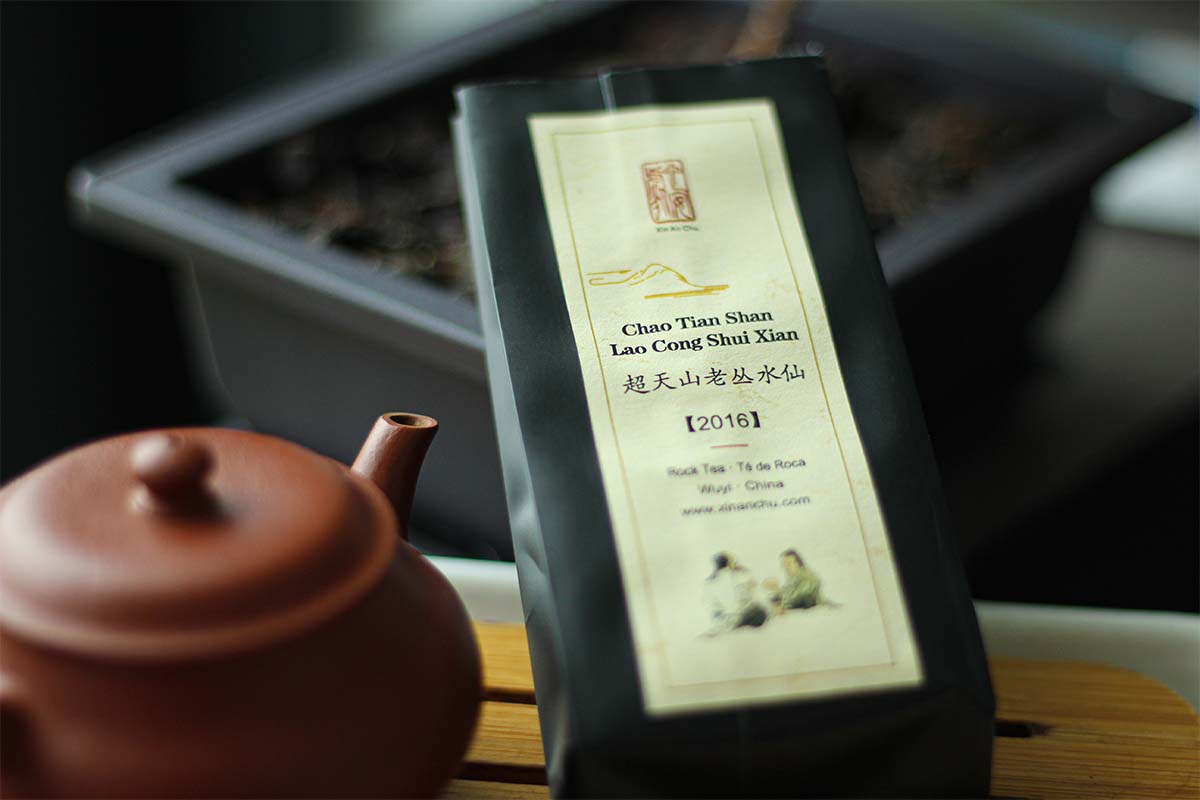I recently received my order from Lao Tea Shop and wanted to write a review about one of the teas: the 2004 Zhong Cha Duoteli Yellow Box Liu Bao. All of the other teas (except one) are ‘Four Gold Coins’ Liu Bao from different years, so this one is the odd one.
2004 Zhong Cha Duoteli Yellow Box Liu Bao
This tea was produced in 2006 but the material is from 2004, which is why I see this as a 2004 tea. The box this tea comes in is yellow (hence its name) and is famous in Malaysia. You can find it in a lot of shops, so not only in tea shops. I have never been to Malaysia myself, but that is what I read on the internet. I hope to see if this is really the case once the pandemic is over…
The 2004 Zhong Cha Duoteli Yellow Box Liu Bao is produced by the CNNP Wuzhou Tea Factory under the Duoteli brand. The one remarkable thing about this tea is that it consists of tea leaves from Guangxi, but these leaves are mixed with yellow tea. This is a combination I haven’t tried so I’m curious to taste it.
Tea Tasting
- Water 99°C
- 6.1g for a 140ml Duanni teapot
Relatively smaller leaves with some stems. The colour is dark brown but there are also some lighter brown tints. It has a strong aroma of sawdust with a touch of dry wood. There is also some very subtle camphor beneath the surface. Once the leaves get wet, I’m getting dark berries.

Infusion 1 (20 sec): this is a gentle infusion with a lighter colour. It’s gentle, but I already feel some delicious flavours waiting to be discovered. What strikes me here is that there already is an aftertaste. It slumbers a bit, but it’s definitely there. I’m getting some hints of different flavours but I’m unable to pin down what exactly.
Infusion 2 (25 sec): some of the woodsy notes I got when smelling the leaves are present in this one. However, it’s only traces of dry wood and nothing in its full form. It feels as if it has fragments of different flavours again. There is a tiny bit of camphor, but it’s mainly dominated by flavours of the forest. It’s definitely not in your face as it’s gentle and pleasant. It feels like a forest that grips you and you never want to leave it… After a few minutes, the aftertaste becomes sweet and some camphor starts trickling in.
Infusion 3 (30 sec): the liquor is not turning pitch black and I can still see the bottom of my cup. It feels just right. Some of the dry wood has come to the surface, but the undertone still has forest notes to it. Once I take a sip, my whole mouth is coated immediately. Just like after the previous infusion, the aftertaste reaches its peak a few minutes after swallowing.
Infusion 4 (40 sec): the flavours are less intense but the liquor feels really smooth and it flows well. After a few minutes, camphor is popping up in the aftertaste.
Infusion 5 (long): still really smooth without any harsh or fresh flavours. It’s getting a bit earthy from the middle and slowly changes into subtle camphor in the aftertaste.
Infusion 6 (long): so smooth and the earthiness is more intense right from the start. It slowly fades into a thirst-quenching aftertaste.
Infusion 7 (long): more of the same but it’s fading a bit.
Conclusion
This was such a smooth tea! I feel it was less about flavours and more about texture and body feel.
I experienced dry wood and hints of a forest you never want to leave. Towards the end of the session, more earthy flavours showed themselves. Something that really stood out was the aftertaste. A couple of minutes after swallowing, a smooth and delicious aftertaste became noticeable. I was genuinely surprised by this tea; mainly because of its smoothness and subtle flavours.
If you want to try the 2004 Zhong Cha Duoteli Yellow Box Liu Bao, you can buy it over here.





